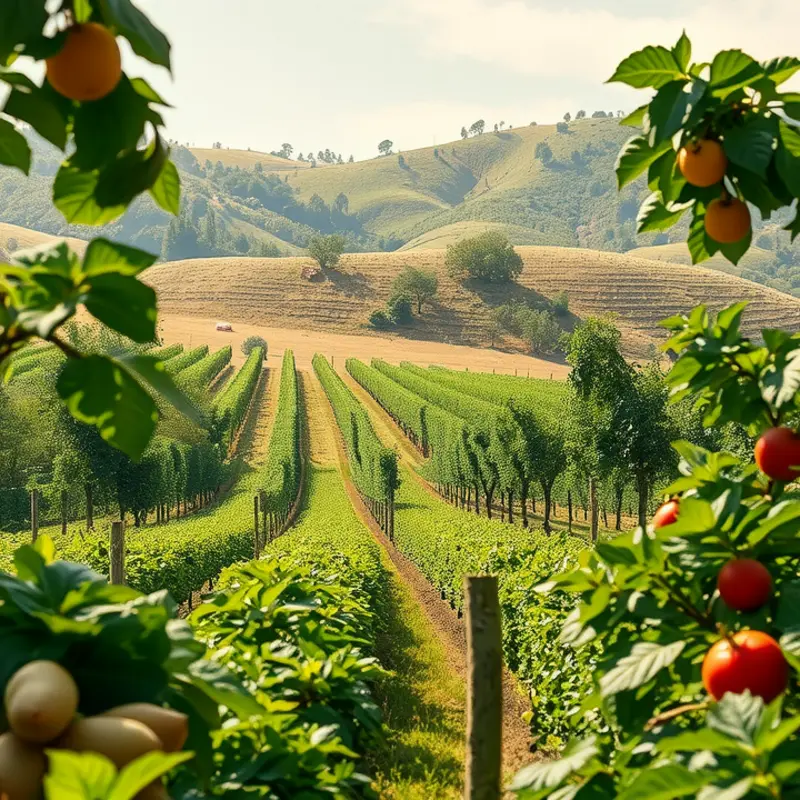The Arctic, often synonymous with freezing temperatures and vast icy landscapes, harbors rich culinary traditions that tell stories of survival and innovation. Beneath its harsh exterior lies a wealth of unique ingredients and techniques rooted deeply in indigenous cultures. This exploration of Arctic cuisine reveals not only the foods that sustain its people but also the cultural narratives intertwined with each dish, inviting food enthusiasts and culturally curious readers to delve into a world often overlooked.
Indigenous Ingredients: Nature’s Bounty

The Arctic landscape, often perceived as a barren world of ice and snow, offers a surprising variety of unique ingredients deeply rooted in indigenous cultures. Each component reflects a harmonious relationship between people and nature, cultivated through centuries of hard-earned knowledge passed down through generations.
Local fish, such as Arctic char, salmon, and whitefish, form the cornerstone of many traditional Arctic meals. These species thrive in icy waters, benefiting from a pristine environment that enhances their rich flavors. Communities employ sustainable fishing methods to maintain balance with nature, often using selective techniques to avoid overfishing. Fish is typically preserved through traditional smoking and drying methods, ensuring a readily available source of nutrients during the harsh winter months.
The Arctic is also home to various marine mammals, including seals and whales. Indigenous groups respectfully harvest these animals, utilizing every part to support their communities. Seal blubber, or “muktuk,” is a key component of the Arctic diet, packed with vital nutrients such as omega-3 fatty acids essential for survival in extreme climates. Exploring the relevance of fish oil in diets worldwide can be found in this related discussion.
Additionally, seasonal plants add a unique dimension to the Arctic culinary landscape. Berries, like crowberries and lingonberries, burst with flavor and are a vital source of vitamins. They are often harvested during the brief summer months and preserved through freezing, transforming into jams and desserts that add a sweet note to Arctic dishes. Seaweed, another important ingredient, is collected from the rocky shores and incorporated into soups and stews, infusing them with minerals and a distinct umami taste.
Sustainable practices in harvesting these ingredients are entrenched in indigenous traditions. Community-driven approaches ensure that resources are never depleted beyond recovery, preserving biodiversity and ensuring food security. Knowledge sharing within and among communities helps adapt traditional methods to contemporary challenges, including the impacts of climate change on the Arctic’s fragile ecosystems.
These practices underscore a broader understanding of environmental stewardship. By embracing traditional knowledge and modern insights, indigenous communities protect their natural resources while celebrating their cultural heritage. This integration of tradition and sustainability offers invaluable lessons on how to respect and coexist with our environment, ensuring the well-being of future generations while savoring the Arctic’s culinary treasures.
Traditional Dishes: A Taste of Survival

In the unforgiving Arctic landscape, survival is an art mastered by indigenous communities through culinary ingenuity. Traditional dishes are not just sustenance but stories of resilience. Smoked fish, a staple of the Arctic diet, reflects this mastery. The method involves suspending fish above a slow-burning fire, its low temperature preserving nutrients and enhancing flavors. Such practices prove vital for survival in harsh climates, while also catering to the communal aspect of eating together.
Fermentation, another preservation method, is widespread. Techniques like these were born out of necessity, turning otherwise short-lived ingredients into long-lasting food sources. Fermented seal flipper, for instance, is a delicacy that imparts both unique taste and nutritional benefits. This fermentation, relying on naturally occurring bacteria, not only preserves but also enhances the nutrient profile of food, adding complex flavors to the simple ingredients available.
Communal meals hold a different kind of significance. They are social glue, fostering connections among community members. In these gatherings, storytelling is as integral as the food itself, reinforcing cultural identity and collective memory. Over generations, these shared meals have shaped the social fabric, creating a sense of belonging and unity.
The Arctic’s culinary heritage serves as inspiration for modern chefs who are keen to reinterpret these traditional recipes. By incorporating innovative techniques while retaining the soul of the original dish, chefs pay homage to the cultural significance of traditional Arctic cuisine. This balance of innovation and tradition enables a wider audience to experience these unique flavors.
For those interested in savoring these unique flavors, similar sustainable storage methods can be explored to reduce waste even in home kitchens. Insights on techniques to maximize the shelf life of your ingredients may be found here, ensuring that every morsel is valued.
In embracing both traditional and modern approaches, these age-old recipes continue to be celebrated while ensuring their relevance in the contemporary culinary world. The Arctic remains a testament to how food, both past and present, can sustain more than the body — it sustains cultures and communities too.
Final words
Exploring Arctic cuisine unfurls a narrative of resilience, respect for nature, and rich cultural traditions that have stood the test of time. From harvesting unique ingredients to preparing age-old recipes, each bite tells a story that connects communities to their heritage and environment. In this exploratory journey, the Arctic serves as a culinary frontier, inviting food enthusiasts to expand their palates and embrace the flavors and traditions of a region often perceived solely through its icy façade. A deeper appreciation for these culinary practices allows for a fuller understanding of not only what we eat but the culture and stories behind each meal.








